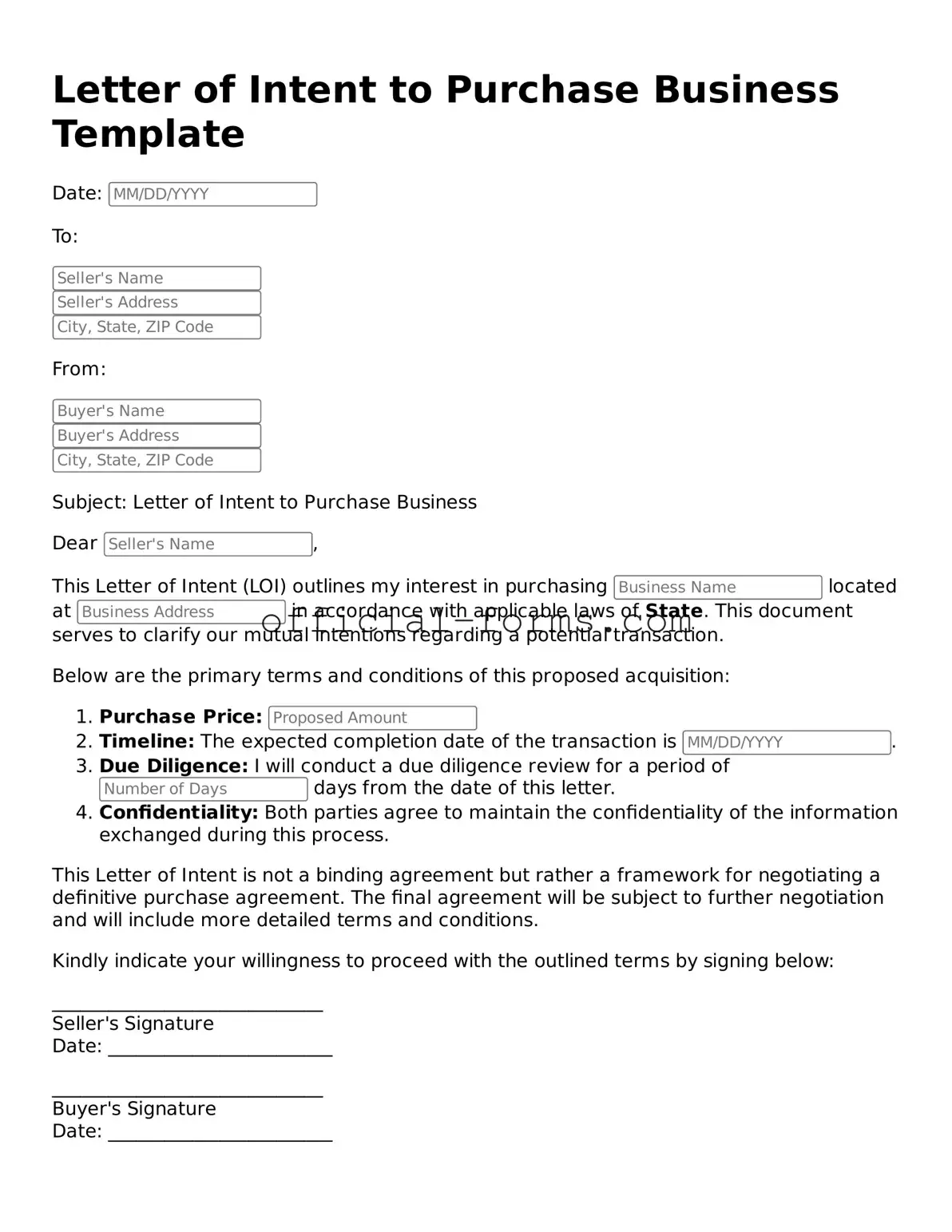Attorney-Verified Letter of Intent to Purchase Business Template
The Letter of Intent to Purchase Business form is a crucial document that outlines the preliminary agreement between a buyer and a seller regarding the sale of a business. This letter serves as a foundation for negotiations, detailing key terms and conditions that both parties aim to agree upon. Understanding its significance can help streamline the purchasing process and ensure that both sides are on the same page from the start.
Open My Letter of Intent to Purchase Business Now
